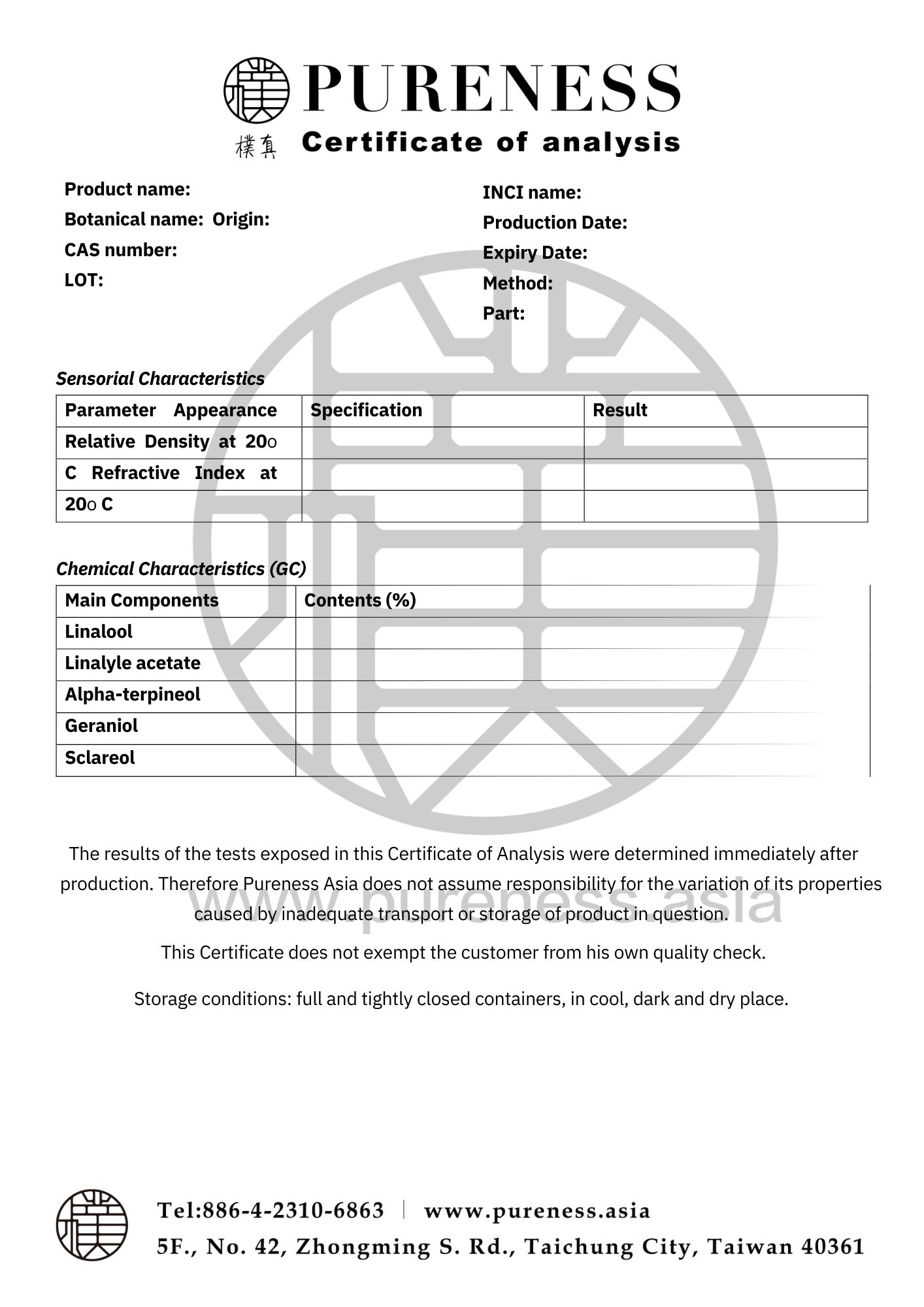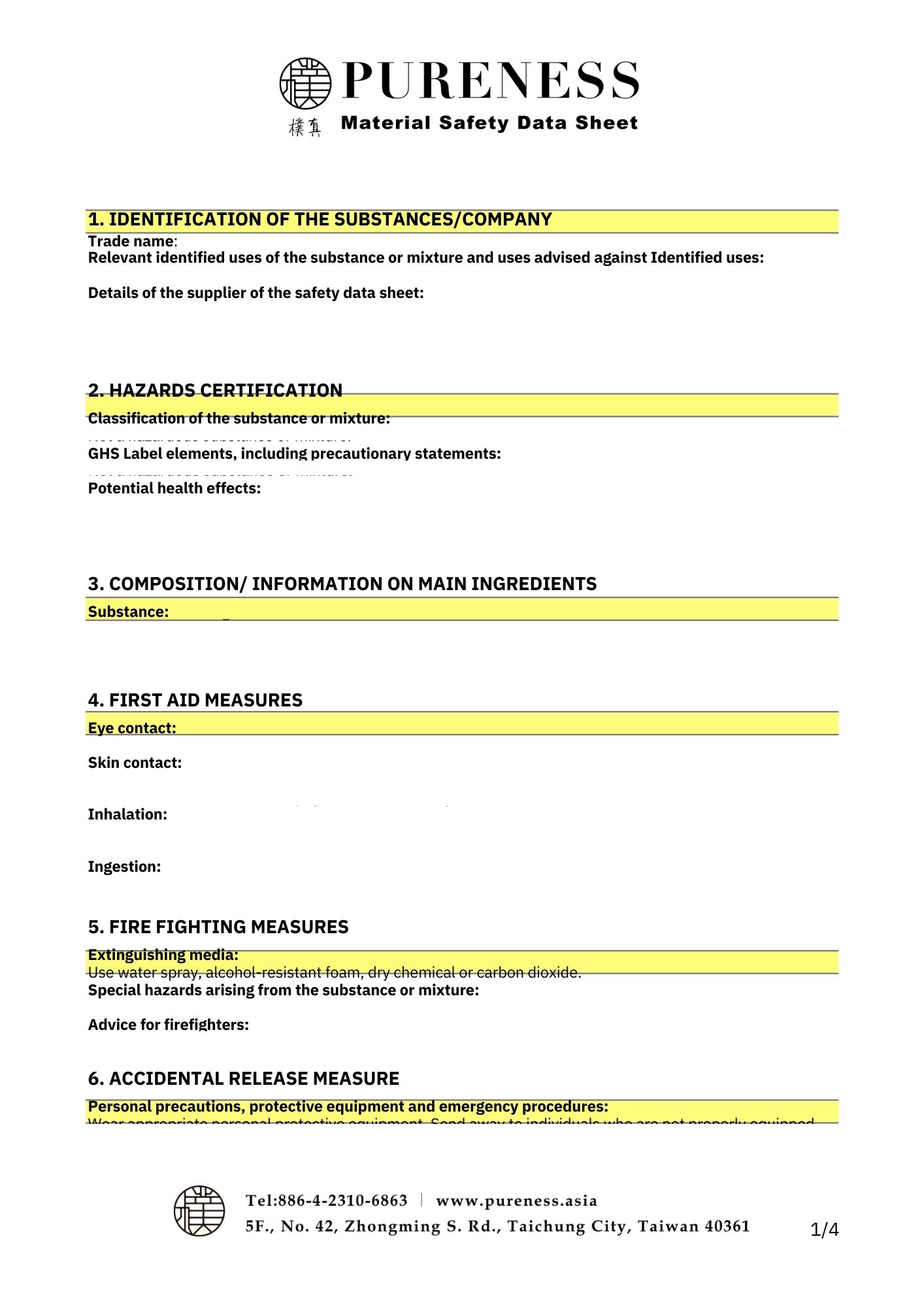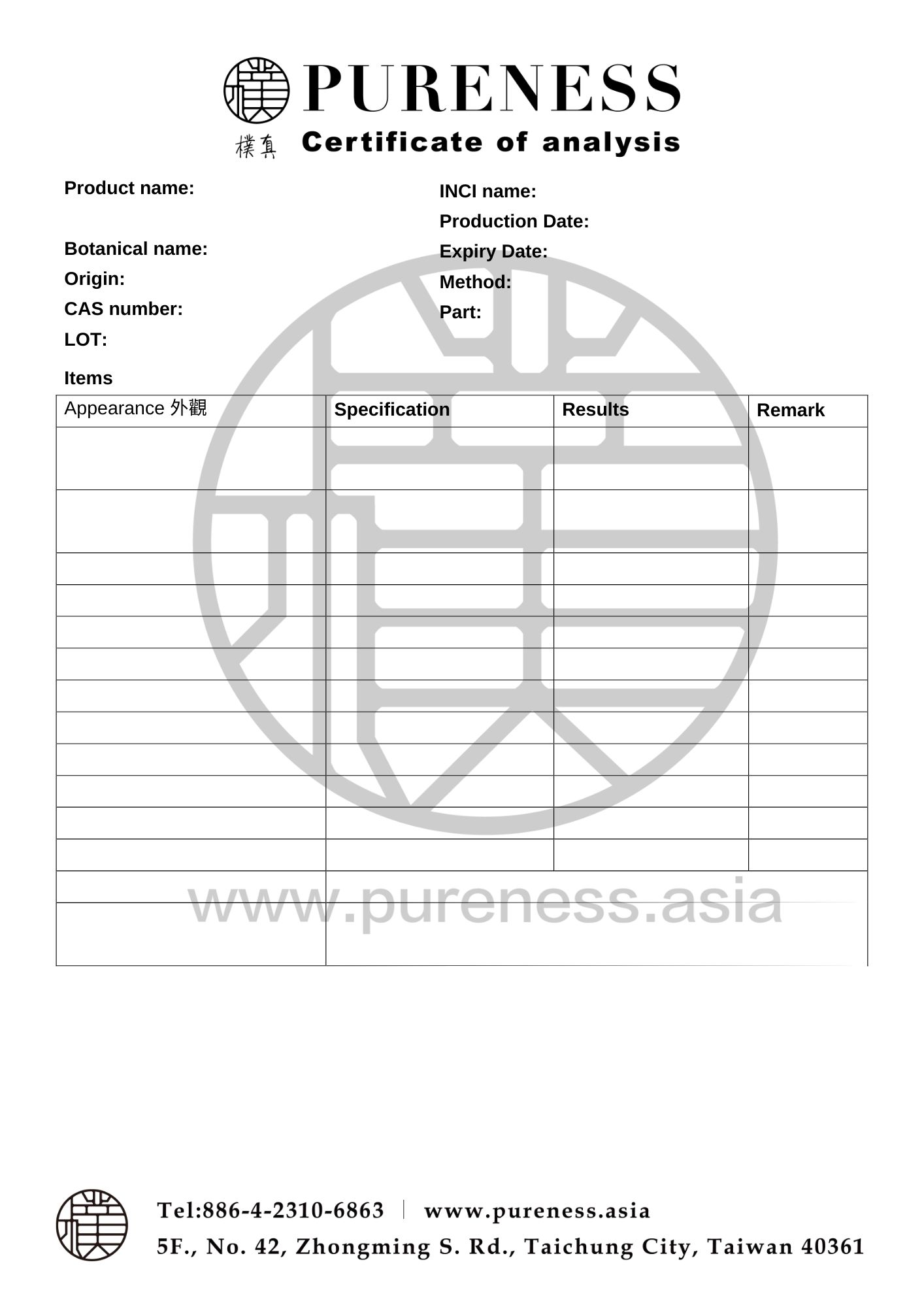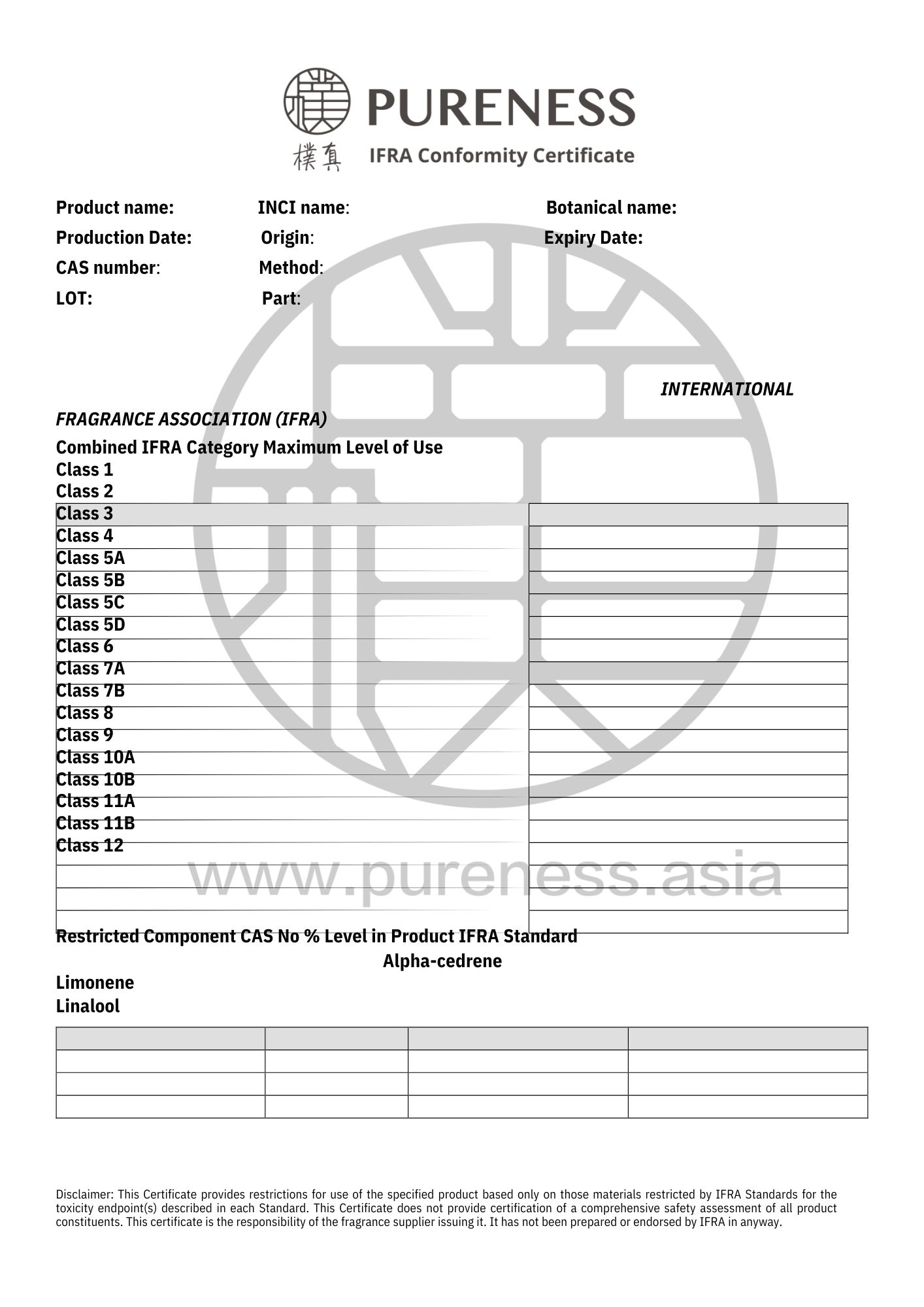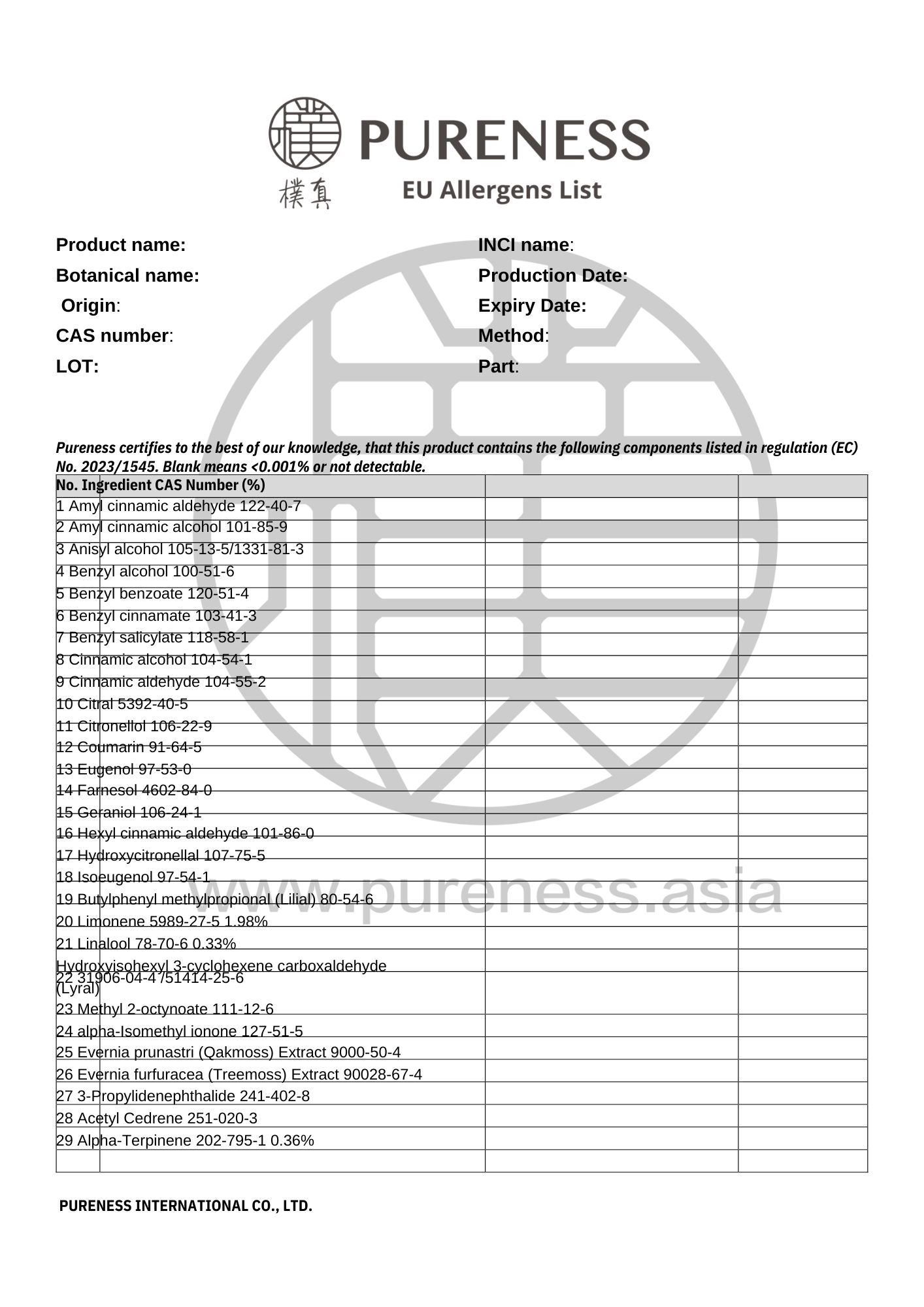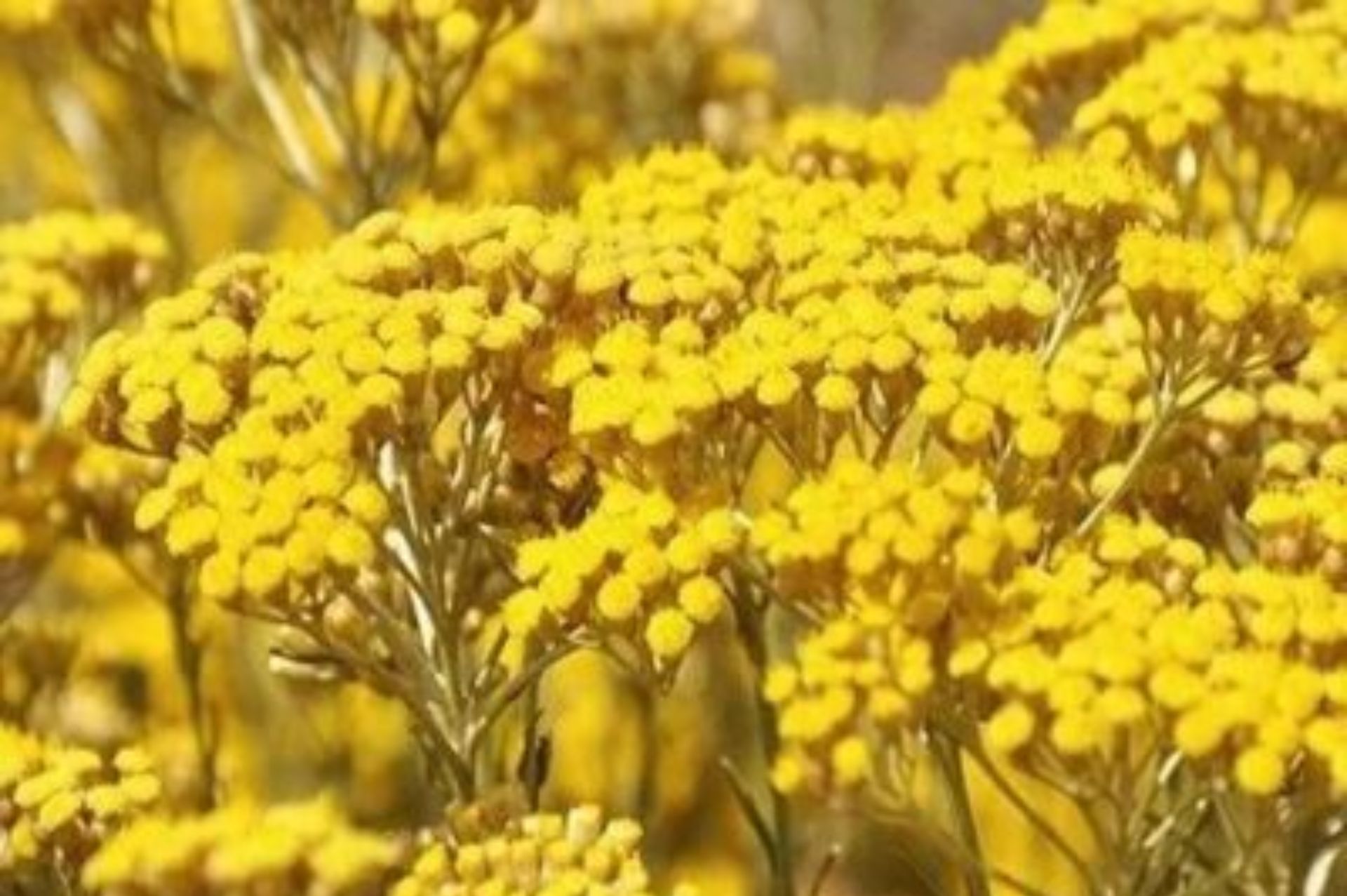
Helichrysum
Scientific name|Helichrysum italicum
Origin|Hungary
Classification|Flower series
Specifications|500g-25kg Please contact sales for details
Extraction part|Flower
Extraction method | Distillation
Plant family|Asteraceae
Aroma|Powerful and rich, with a hint of herbal sweetness
▎Essential Oil Introduction
Helichrysum is ideally sourced from Pécs, Hungary. Pécs, located in the southwestern part of Hungary, is one of the country’s oldest cities. Situated between the Danube and Drava rivers, it enjoys a pleasant climate and beautiful scenery, characterized by a continental temperate broadleaf forest climate, making it an ideal environment for growing Helichrysum.
In the perfume industry, Helichrysum is known as the "Immortelle" due to its enduring properties—its shape and color remain unchanged even after drying, earning it the nickname "Everlasting Flower." According to legend, the flower was used to quell the anger of the Greek goddess of vengeance, Machaon.
▎Component Analysis
|Main component: Sesquiterpene ketones and esters
The primary components include italidiones and neryl acetate. Additionally, other compounds present are α-pinene, γ-curcumene, and β-selinene.
The β-diketones in Helichrysum, such as italidiones, include:
- 4,6,9-Trimethyl-8-decen-3,5-dione (Italidione I)
- 2,4,6,9-Tetramethyl-8-decen-3,5-dione (Italidione II)
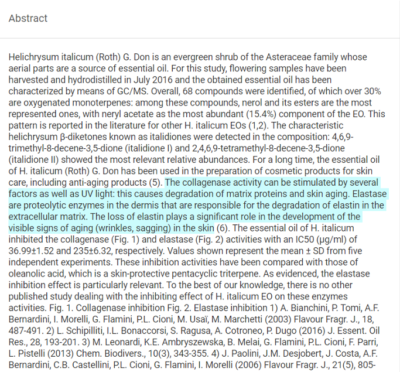
▸ It is commonly used as an additive in the production of various cosmetics.
|Component 1: Italidiones
|Component 2: Neryl acetate
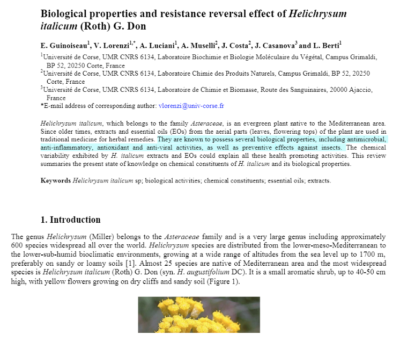
▸ Neryl acetate has antioxidant properties and promotes skin circulation.
|Raw Material Certifications
To obtain relevant certification information, please contact us on WhatsApp.
▎References
- The antiaging properties of Helichrysum italicum (Roth) G.Don essential oil: collagenase and elastase inhibition activities.
- ClaudiaJuliano, et al. Antimicrobial activity and chemical composition of essential oil from Helichrysum microphyllum Cambess.subsp. tyrrhenicum Bacch., Brullo & Giusso collected in South-West Sardinia. Saudi Journal of Biological Sciences.Volume 26, Issue 5, July 2019 , Pages 897-905
- Ascrizzi, Roberta & Flamini, Guido & Fraternale, Daniele. (2017)..The antiaging properties of Helichrysum italicum (Roth) G.Don essential oil: collagenase and elastase inhibition activities.
- Maksimovic S.et al. Separation of phytochemicals from Helichrysum italicum: An analysis of different isolation techniques and biological activities of prepared extracts.Phytochemistry 138 (2017) 9-28.
- Jane Buckle, PhD, RN. Clinical Aromatherapy: Essential Oils in Healthcare (Third Edition. United Kingdom: Churchill Livingstone Elsevier, 2015)
- Viegas, et al. Helichrysum italicum: From traditional use to scientific data.J. Ethnopharmacol. 2014, 151, 54–65.
- Varney E, Buckle J. Effect of inhaled essential oils on mental exhaustion and moderate burnout: a small pilot study. J Altern Complement Med. 2013; 19(1): 69–71.
- E. Guinoiseau, et al. Biological properties and resistance reversal effect of Helichrysum italicum (Roth) G. Don, 2013, Microbial pathogens and strategies for combating them : science, technology and education A. Méndez-Vilas, Ed. 2, 1073-1080.
- C. Foti, S. Guida, et al. Allergic contact dermatitis caused by Helichrysum italicum contained in an emollient cream. Contact Dermatitis, 69 (2013), pp. 62-63
- M. Galbany-Casals, et al. Genetic variation in Mediterranean Helichrysum italicum (Asteraceae; Gnaphalieae): do disjunct populations of subsp. microphyllum have a common origin? Plant Biol., 13 (2011), pp. 678-687.
- Morone-Fortunato I, Montemurro C. et al.2010. Essential oils, genetic relationships and in vitro establishment of Helichrysum italicum (Roth) G. Don ssp. italicum from wild Mediterranean germplasm. Ind Crops Prod. 32:639–649 .
- V. Lorenzi, et al. Geraniol restores antibiotic activities against multidrug-resistant isolates from gram-negative species. Antimucrobial Agents Chemother., 53 (2009), pp. 2209-2211
- A. Bianchini, F. Santoni, et al. Partitioning the relative contributions of inorganic plant composition and soil characteristics to the quality of Helichrysum italicum subsp. italicum (Roth) G. Don fil. essential oil. Chem. Biodivers., 6 (2009), pp. 1014-1033
- A.C. Lourens, A.M. Viljoen, F.R. van Heerden. South African Helichrysum species: a review of the traditional uses, biological activity and phytochemistry.J. Ethnopharmacol., 119 (2008), pp. 630-652
- J. Mastelic, O. Politeo, et al.Composition and antimicrobial activity of Helichrysum italicum essential oil and its terpene and terpenoid fractions. Chem. Nat. Compds., 41 (2005), pp. 35-40
- A. Sala, M.C. Recio, et al. A new dual inhibitor of arachidonate metabolism isolated from Helichrysum italicum. Eur. J. Pharmacol., 460 (2003), pp. 219-226
- A. Sala, MC Recio, RM Giner, S. Manez, JL Rios. New acetophenone glucosides isolated from extracts of Helichrysum italicum with anti-inflammatory activity. J. Nat. Prod., 64 (2001), pp. 1360- 1362
- Sala, A., 2001. Principios antiinflamatorios y antioxidantes de Helichrysum italicum (Roth) G. Don. PhD Thesis, University of Valencia.
- Bianchini A, Santoni F, Paolini J, Bernardini AF, Mouillot D, Costa J. Partitioning the Relative Contributions of Inorganic Plant Composition and Soil Characteristics to the Quality of Helichrysum italicum subsp. italicum (Roth) G. Don fil. Essential Oil . Chemistry and Biodiversity. 2009; 6: 1014-1033.
- Nostro A, Bisignano J, Cannatelli MA, Crisafi G, Germano MP, Alonzo V. Effects of Helichrysum italicum extract on growth enzymatic activity of Staphylococcus aureus. International Journal of Antimicrobial Agents. 2001 ;17: 517-520.
- Nostro A, Cannatelli MA, Musolino AD, Procopio F, Alonzo V. Helichrysum italicum extract interferes with the productions of enterotoxins by Staphylococcus aureus. Letters in Applied Microbiology. 2002; 35: 181-184.
- Nostro A, Cannatelli MA, Crisafi G, Musolino AD, Procopio F, Alonzo V. Modifications of hydrophobicity, in vitro adherence and cellular aggregation of Streptococcus mutans by Helichrysum italicum extract. Letters in Applied Microbiology.2004; 38: 423-427 .
- Rossi PG, Berti L, Panighi J, Luciani A, Maury J, Muselli A. De Rocca Serra D, Gonny M, Bolla JM. Antibacterial action of essential oils from Corsica. Journal of Essential Oil Research. 2007; 19: 176 -182.
- Burt SA. Essential oils: their antibacterial properties and potential applications in food: a review. International Journal of Food Microbiology. 2004; 94: 223-253.
- Lorenzi V, Muselli A, Bernardini AF, Berti L, Pages JM, Amaral L, Bolla JM. Geraniol restores antibiotic activities against multidrug-resistant isolates from gram-negative species. Antimicrobial agents and chemotherapy. 2009; 53: 2209-2211 .
- Bauer J, Koeberle A, Dehma F, Pollastro F, Appendino G ,Northoff H, Rossi A, Sautebin L, Werz O. Arzanol, a prenylated heterodimeric phloroglucinyl pyrone, inhibits eicosanoid biosynthesis and exhibits anti-inflammatory efficacy in vivo. Biochemical Pharmacology. 2011; 81: 259-268.
- Nostro A, Cannatelli MA, Marino A, Picerno I, Pizzimenti FC, Scoglio ME, Spataro P. Evaluation of antiherpesvirus-1 and genotoxic activity of Helichrysum italicum extract. Microbiologica. 2003; 26: 125-128.
- Sala A, Recio MC, Schinella GR, Máñez S, Giner RM, Cerdá-Nicolás M, Ríos JL. Assessment of the anti-inflammatory activity and free radical scavenger activity of tiliroside. European Journal of Pharmacology. 2003; 461: 53 -61.
- Rosa A, Pollastro F, Atzeri A, Appendino G, Melis MP, Deiana M, Incani A, Loru D, Dessì MA. Protective role of arzanol against lipid peroxidation in biological system. Chemistry and Physics of Lipids. 2011; 164: 24-32.
|Some images sourced from the internet. Contact for copyright removal|
